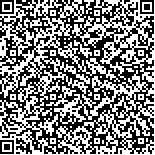下载中心
优秀审稿专家
优秀论文
相关链接
摘要

遥感技术能够提供卫星过境时刻地表参量的瞬时值,进而通过模型构建可反演得到瞬时蒸散发。相对于瞬时蒸散发,日尺度蒸散发在实际生产生活中具有更重要的应用价值。本文系统地总结分析了遥感反演瞬时蒸散发的代表性日尺度扩展方法,包括蒸发比不变法、解耦因子不变法、辐射能量比不变法、参考蒸发比不变法、地表阻抗不变法和数据同化法,并对各方法的基本原理、估算精度、适用性等进行了对比分析。在此基础上,进一步综述了日尺度扩展方法存在的不确定性和主要问题,包括扩展方法本身误差、云覆盖、气象数据获取、夜间蒸散发估算、遥感反演同扩展误差累积及真实性检验等,并指出今后应从加强有云天及夜间蒸散发扩展机理和方法等方面的研究来提升瞬时蒸散发日尺度扩展精度。
Evapotranspiration (ET), including evaporation from soil surface and vegetation transpiration, is an important component for water and energy balances on the Earth's surface. The quantification of ET at daily or long time scales is significant in modeling the global hydrological cycle, studying climate change, and managing water resources. However, current remote sensing-based ET models can generally only provide snapshots of ET at the time of a satellite overpass and do not satisfy the expectations of hydrologists, irrigation engineers, and water resources managers concerned with practical applications. In this paper, a comprehensive overview of the methods for estimating daily ET from remotely sensed instantaneous observations is presented. These methods include the constant upscaling factor methods (constant evaporative fraction, constant decoupling factor, radiation-energy derived, constant reference evaporative fraction, and constant surface resistance) and data assimilation method. The commonly used approaches are compared with a discussion regarding the main merits, limitations, and accuracies. The problems and uncertainties of the temporal upscaling of ET, including the evaluation of model applicability, the daily variation of cloud, the spatial interpolation accuracy of meteorological parameters, nighttime ET, the uncertainties from the temporal upscaling methods and ET models, and the approaches of accuracy assessment, are discussed. To improve the accuracy of daily ET estimation from remotely sensed instantaneous observations, several suggestions for future research are proposed as follows:First, research on the continuous surface meteorological data at remote sensing image pixel scale should be enhanced because large-area applications of the temporal upscaling methods are hampered by the lack of appropriate ground-based observations and the spatial heterogeneity causes low accuracy of the spatial interpolation methods of meteorological parameters. Second, the accuracy of ET estimation using remotely sensed data can significantly affect the accuracy of the temporal upscaling of ET. As ET estimation models have not been perfected yet, the methods for the temporal upscaling of ET can be combined with those for ET estimation to reduce the influence of accumulated errors. Third, to weaken the influence of unstable upscaling factor during cloudy days, research on the relation between the constant upscaling factor and cloud (e.g., the appearing time, thickness, and duration of cloud) should be enhanced. Therefore, developing a robust method for the temporal upscaling of ET during cloudy days is vital. Fourth, research on the physical mechanisms of each commonly used method and development of an improved upscaling factor that can be independent of the variation in atmospheric variables and can incorporate the horizontal advection are essential. Fifth, numerous methods for the temporal upscaling of ET can only accurately provide daytime ET, whereas the daily ET is closely concerned with practical applications. Thus, research regarding the temporal upscaling methods should be enhanced in consideration of nighttime ET and its physical mechanisms. Finally, enhancing the research on the new technology and methods of accuracy assessment for ET can weaken the uncertainty of verification.

